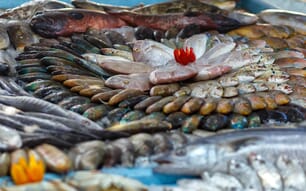For other stocks such as cod, whiting, saithe and herring, catches will remain at current levels and potentially decrease in line with management plans.
This is first release of ICES advice covering some of the main stocks of interest to Scotland. The next release will be in the early autumn. This year that advice will include mackerel, blue whiting, Atlanto Scandian herring, and also anglerfish and west coast nephrops.
Responding to these assessments, Scottish Fisheries Secretary, Richard Lochhead, said: “As usual, this scientific advice shows a mixed picture. I am greatly encouraged by the prospects for increased catches in 2015 for North Sea Haddock and Nephrops, particularly after the cuts sustained this year. These are two of the most valuable stocks for our fleet and this will be very welcome news for our fishermen. I am also encouraged to see that for most of the stocks of interest to Scotland, they are being fished according to the science and I would like to thank our fishermen for the contribution they continue to make to sustainable fisheries.
“For North Sea Cod, although numbers continue to increase, progress is slower. However, at a more local level in different parts of the North Sea, the science confirms what our fishermen have been telling me – that there are hotspots of abundance and these don’t align with the quota available. This can create a real headache for our fishermen who struggle to avoid catching cod even when they are targeting other fish, yet are forced to discard it because they cannot get enough quota. With the discard ban fast approaching, we must work with Europe to find a solution to this problem.
“Publication of this science marks the start of the annual cycle of negotiating our fleet’s fishing opportunities for the coming year. My officials and I will continue to work closely with all parts of the fishing industry over the summer to explain the science in detail and to hear what impact these new assessments will have for them. This will help to shape our priorities we will take into the autumn’s talks to secure the best outcome possible for Scotland.”



